May 4th
This week is Air Quality Awareness Week so for this Mushroom Monday, we are talking about Smooth Rock Tripe.
Smooth Rock Tripe is a type of lichen that you will find growing on rocks all over the mountain, however, its most prevalent at Eagles Nest and along Kelley’s Trail. Since they don’t grow in the soil these lichens get their nutrients by absorbing them straight from the air. Air pollution changes the chemistry of the atmosphere around these lichens. Small changes in the amount of nitrogen or the acidity of rainfall can kill these normally long-lived organisms. It is because of this that they serve as an indicator species of clean air.
#airqualityweek

April 27th
How many of you have noticed these strange orange growths on cedar trees? The fungus responsible is Gymnosporangium juniperi-virginianae or more commonly known as Cedar-apple Rust.
The round galls found on cedar trees are producing spores right now which will be carried by the wind to apple trees up to a mile away. The spores land on the leaves of apple trees and the leaves develop yellow spots which will mature and release spores this fall that will infect more cedar trees.
Apple orchards battle this fungus each spring with strategic fungicide use and by planting more resistant apple strains.
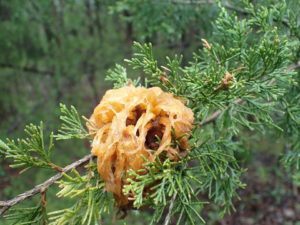
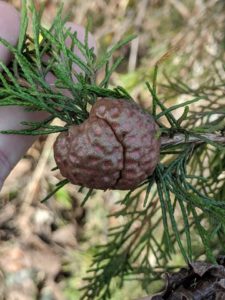
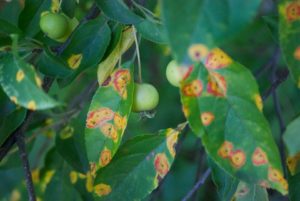
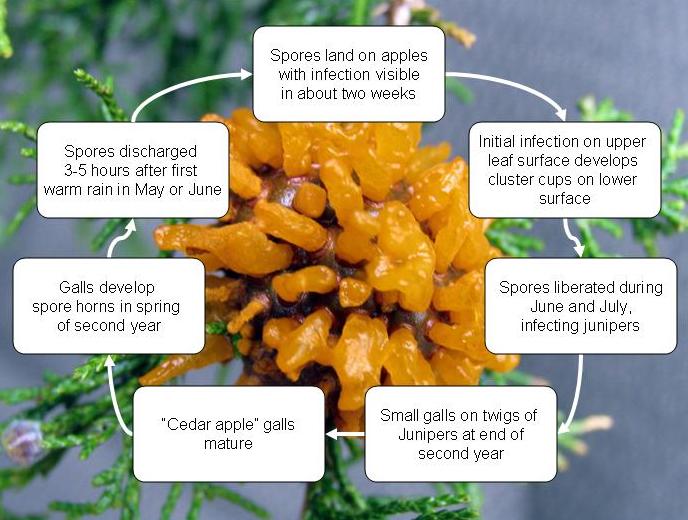
April 20th
#mushroommonday
Did you know that some trees can grow ears?
The ear-like organism growing from this tree is actually a mushroom. Wood Ear Fungi are a type of Jelly Fungus in the family Auriculariacea. There are several species and most of them have this ear-like shape. They can be found year-round growing from dead trees.

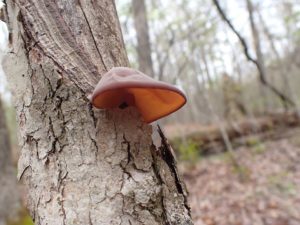
April 13th
The Dryad’s Saddle mushroom is a common find on hardwood logs and snags throughout the Eastern US. They can grow to be over a foot across so they are hard to miss. Young mushrooms are edible but as they get larger they get leathery and unappetizing. The dark scaley pattern on the top of the mushroom is where it gets another common name of Pheasant’s Back.
What mushrooms are you finding while you are out and about?
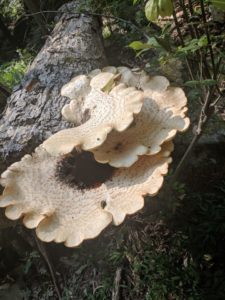
April 6th
#mushroommonday
Today’s mushroom is the Black Sooty Mold Fungus. This dark black fungus is found exclusively on American Beech trees, but it doesn’t feed on the tree, at least not directly. The Black Sooty Mold Fungus is actually feeding on the waste of the Beech Blight Aphid. The aphids drink sap from the trees and excrete a sugar rich liquid known as honeydew, and that sugary liquid is what the the fungus is feeding upon.
Beech Blight Aphids have a defensive behavior where they will wave their bodies around when they feel threatened…this behavior has led to some people calling them “boogie woogie aphids”
https://youtu.be/gdIqdepyynw

March 30th
This week’s mushroom is probably well known to some of you. Every spring around this time you can find morel mushrooms in forests across Kentucky. They are the inspiration for numerous festivals and are many people’s first experience with wild mushroom hunting.
We have six species of Morels but most folks just lump them into two categories.
Yellow Morels that typically are the first to show up in the spring will usually be found near some type of dead or dying hardwood tree, Elm, Ash, and Poplar are common hosts.
Black Morels will start fruiting in the coming weeks they are a bit less picky about habitat. They can be found in deciduous and coniferous forests across the state.
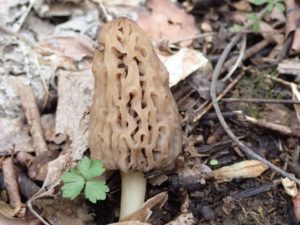
March 23rd
All of this rain is sure to bring out some interesting fungi in our forest. The Gray Urn and the Scarlet Elf Cup can both be found growing from the ground near fallen hardwood trees and branches.
The Gray Urn (Urnula craterium) is darkly colored and hard to spot. It prefers to grow on fallen oaks but it can be parasitic to live oak trees as well. This mushroom produces a bioactive compound that inhibits the growth of other fungi.
The Scarlet Cup (Sarcoscypha species) are a common find along the trails due to their bright red coloration. Scarlet Cups grow in the same habitats as the Gray Urn except it prefers to grow from willow and maple. Native Americans would dry and grind the mushrooms into a styptic powder that would commonly be used to treat the navels of newborns.
What mushrooms have you found lately?


